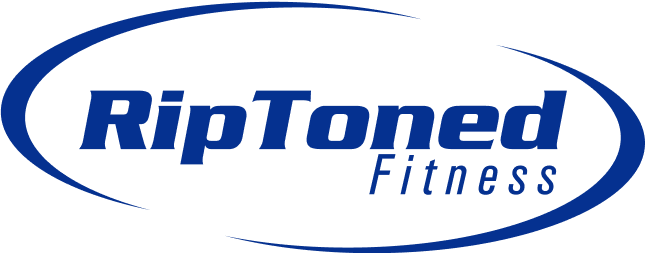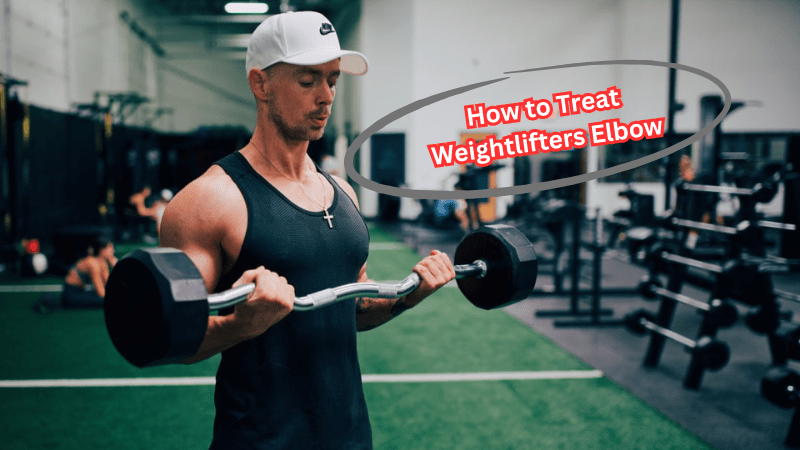Weightlifter's elbow, also known as medial or lateral epicondylitis, is a common issue for fitness enthusiasts. This condition involves pain and inflammation around the elbow joint, often caused by repetitive strain during weightlifting exercises. It typically affects those who lift heavy weights, misuse technique, or skip proper warm-ups and stretches.
If left untreated, weightlifter's elbow can worsen, leading to persistent discomfort and limited mobility, hindering your ability to pursue fitness goals. The good news is that with early intervention and proper care, you can address the issue effectively.
Whether you're dealing with mild discomfort or significant pain, understanding its symptoms, causes, and treatment options is crucial for recovery and prevention. Let's explore how to get you back on track pain-free!
What is Weightlifters Elbow?
Weightlifter's elbow is an overuse injury that occurs due to repeated stress on the tendons and muscles around the elbow joint. It affects both professional and recreational weightlifters, as well as athletes who engage in activities involving repetitive arm movements. The condition causes inflammation of the tendons connecting the forearm muscles to the bony bumps on either side of your elbow.
Also known as "golfer's elbow" or "tennis elbow," weightlifter's elbow can cause pain, tenderness, and stiffness on the inner (medial epicondylitis) or outer (lateral epicondylitis) side of the elbow. You may experience discomfort when performing gripping motions, such as lifting weights, grasping objects, or even shaking hands.
Symptoms of Weightlifters Elbow
Weightlifter's elbow can significantly impact your performance and daily routines if not addressed promptly. One of the most noticeable symptoms is pain around the inner or outer part of the elbow, which may start as a dull ache and intensify over time. You might also experience stiffness in the joint, making it harder to fully extend or bend your elbow. This stiffness often leads to reduced mobility, limiting your range of motion during workouts or everyday tasks.
Another common sign is weakness when gripping or lifting weights, as the affected muscles struggle to support the strain. You may find it difficult to hold onto objects or maintain your usual lifting form. Swelling and tenderness around the elbow joint are also typical, often accompanied by a warm sensation in the area due to inflammation. Recognizing these symptoms early on is crucial to preventing further damage and ensuring a full, speedy recovery.
Causes of Weightlifter's Elbow
While weightlifting and other repetitive arm movements are the primary causes of weightlifter's elbow, certain factors can increase your risk or contribute to its development. These include:
-
Poor Technique: Improper form while lifting weights or performing repetitive arm motions puts excessive strain on the tendons and muscles around the elbow joint, leading to inflammation and pain.
-
Overuse: Constantly pushing your body beyond its limits without adequate rest and recovery can lead to overuse injuries like weightlifter's elbow. It is crucial to listen to your body and take breaks when needed.
-
Lack of Warm-Up: Skipping warm-up exercises before a workout session can cause shock to the muscles, making them more susceptible to injury. Proper warm-ups help prepare your body for the strain of weightlifting and reduce the risk of overloading the tendons.
-
Pre-existing Conditions: Certain medical conditions such as arthritis or previous elbow injuries can make you more prone to developing weightlifter's elbow. These conditions weaken the muscles and tendons, making them less able to handle repetitive stress.
-
Age: As we age, our tendons become less elastic, increasing their susceptibility to injury.
These factors don't necessarily cause weightlifter's elbow on their own, but they can contribute to its development when combined with repetitive arm movements and excessive strain.
How to Treat Weightlifters Elbow
Now that we've covered the basics of weightlifter's elbow, let's discuss how to treat and manage this condition. The treatment options will depend on the severity of your symptoms, but the goal is to reduce pain and inflammation while promoting healing.
Rest and Ice
The first step in treating weightlifter's elbow is to give your body time to rest and recover. Continuing to strain the affected tendons and muscles can worsen the condition, so it's crucial to take a break from weightlifting or any other activities that aggravate your elbow.
Applying ice packs on the affected area can help reduce inflammation and relieve pain. You can do this several times a day for 15-20 minutes at a time.
Pain Medication
Over-the-counter pain medication, such as ibuprofen or acetaminophen, can help alleviate pain and reduce inflammation. Consult with your doctor for the appropriate dosage and any potential interactions with other medications you may be taking.
Physical Therapy
In more severe cases, physical therapy may be recommended to strengthen the affected muscles and tendons and improve joint flexibility. A trained therapist can also guide you in proper lifting techniques to prevent further strain on your elbow.
Stretching Exercises
Stretching exercises can help alleviate stiffness in the affected area and increase mobility. Your physical therapist or trainer can recommend specific stretches that target the forearm muscles and tendons around the elbow.
Supportive Braces
Wearing a supportive brace or wrist splint can help reduce strain on the tendons and muscles around the elbow. These braces can also provide compression, which may improve blood flow and promote healing.
Surgery
In rare cases where other treatments are ineffective, surgery may be necessary to repair damaged tendons or remove scar tissue in the affected area. This option is usually reserved for severe and persistent cases of weightlifter's elbow.
Tips for Preventing Weightlifter's Elbow
Prevention is always better than cure when it comes to injuries like weightlifter's elbow. Here are some tips to help you prevent this condition from occurring:
-
Warm-Up and Cool Down: Always start your workout with a proper warm-up routine that includes stretching exercises for the forearm muscles. After your workout, cool down with some light stretches to help ease tension in these muscles.
-
Proper Technique: Pay attention to your form while lifting weights or performing repetitive arm movements. Make sure you are using the correct technique to avoid excessive strain on the tendons and muscles around your elbow joint.
-
Take Breaks: Don't overdo it when it comes to weightlifting. Take breaks between workouts and alternate between different muscle groups to avoid overuse injuries.
-
Use Proper Equipment: Make sure you are using appropriate equipment, such as gloves or wrist wraps, to provide support and reduce strain on your tendons and muscles.
-
Listen to Your Body: If you experience any pain or discomfort in your elbow during a workout, stop immediately and rest. Pushing through the pain can worsen the condition and lead to more severe injuries.
-
Consult with a Trainer: It's always a good idea to seek guidance from a trained professional when starting a new exercise routine. A trainer can help you with proper form, technique, and suggest modifications that suit your fitness level and abilities.
Inner elbow pain from weightlifting can be a frustrating and painful condition, but with proper treatment and prevention techniques, you can get back to your workout routine in no time. Remember to always listen to your body and take the necessary precautions to avoid injuries and promote a healthy recovery.
Additional Treatment Options
In addition to the above-mentioned treatments, there are some other options that may help with weightlifter's elbow:
-
Acupuncture: This traditional Chinese therapy involves inserting thin needles into specific points on the body to reduce pain and promote healing.
-
Massage Therapy: Massaging the muscles around the affected area can help increase blood flow and reduce tension. A trained massage therapist can also target trigger points that may be contributing to your pain.
-
Ultrasound Therapy: This treatment uses high-frequency sound waves to generate heat deep in the tissues, which can improve blood flow and promote healing.
It's essential to consult with a medical professional before trying any of these additional treatments, as they may not be suitable for everyone and may interact with other medical conditions or medications.
How to Maintain a Healthy Elbow Joint
While weightlifter's elbow can be a common condition among athletes, there are steps you can take to maintain a healthy elbow joint and prevent this condition from occurring. Here are some tips for maintaining the health of your elbow joint:
Proper Nutrition
A well-balanced diet that includes essential nutrients like calcium, vitamin D, and protein is crucial for maintaining strong and healthy bones. These nutrients help build and repair connective tissues, such as tendons and ligaments, which support the joints.
Incorporating anti-inflammatory foods in your diet, such as fatty fish, leafy greens, and nuts can also help reduce inflammation in the body and promote joint health.
Regular Exercise
Staying active and incorporating regular exercise into your routine is essential for maintaining a healthy elbow joint. Low impact activities like swimming, walking, or cycling can help improve blood flow to the joints and promote flexibility.
Strengthening exercises that target the muscles around the elbow joint can also help support and protect this area from injuries.
Proper Lifting Techniques
Whether you're weightlifting or performing everyday tasks, it's crucial to use proper lifting techniques to avoid strain on the elbows. This includes bending your knees, keeping your back straight, and using your leg muscles instead of relying solely on arm strength.
Avoid twisting or jerking motions while lifting heavy objects, as this can put excessive stress on the elbow joint.
Take Frequent Breaks
Giving your joints a break is essential for maintaining their health. If you have a job or hobby that involves repetitive arm movements, take frequent breaks to stretch and give your elbows time to rest.
Use Protective Gear
If you participate in activities that put strain on your elbow joint, such as weightlifting or playing sports, it's crucial to use protective gear like elbow pads or braces. These can help reduce the impact on the joint and prevent injuries.
Listen to Your Body
Finally, it's crucial to listen to your body and pay attention to any pain or discomfort in your elbow joints. If you experience prolonged or severe pain, consult with a medical professional to determine the cause and find appropriate treatment.
FAQs
What is the best way to treat elbow pain caused by weightlifting?
To treat elbow pain like triceps tendonitis, rest is essential. Exercises such as wrist curls and reverse wrist curls can help strengthen the forearm and triceps tendon, reducing elbow discomfort over time.
How can I deal with medial elbow pain without causing chronic pain?
Medial elbow pain can be managed with targeted stretches and strengthening exercises like reverse wrist curls. It's important to prevent elbow pain by correcting lifting techniques and avoiding movements that strain the triceps tendon.
Should I accept elbow pain as a normal part of weightlifting?
No, you should not accept elbow pain as normal. While minor elbow discomfort may occur from overuse, consistent or worsening pain, such as triceps tendonitis, should be addressed to prevent chronic pain or further injury.
How can I prevent elbow pain during weightlifting workouts?
To prevent elbow pain, focus on gradually increasing weight, using proper form, and strengthening supporting muscles with wrist curls and reverse wrist curls. These steps can protect the triceps tendon and reduce the risk of medial elbow pain.
Conclusion
Addressing weightlifter's elbow early is essential to preventing it from sidelining your fitness goals.
Rest, ice therapy, compression, and elevation can reduce inflammation and provide relief, while physical therapy exercises are key to restoring strength and mobility. Prevention also plays a vital role—by warming up properly, using correct techniques, and gradually increasing weights, you can minimize strain on your elbows.
Remember to listen to your body and avoid pushing through discomfort, as ignoring symptoms can lead to long-term damage. If pain or stiffness persists despite these efforts, don’t hesitate to seek professional guidance. By being proactive in your recovery and adopting smart practices, you can get back to lifting pain-free and stronger than before.

